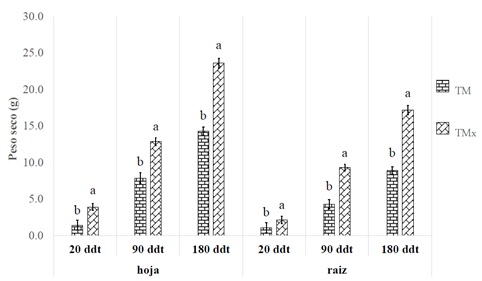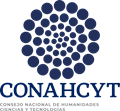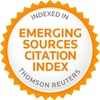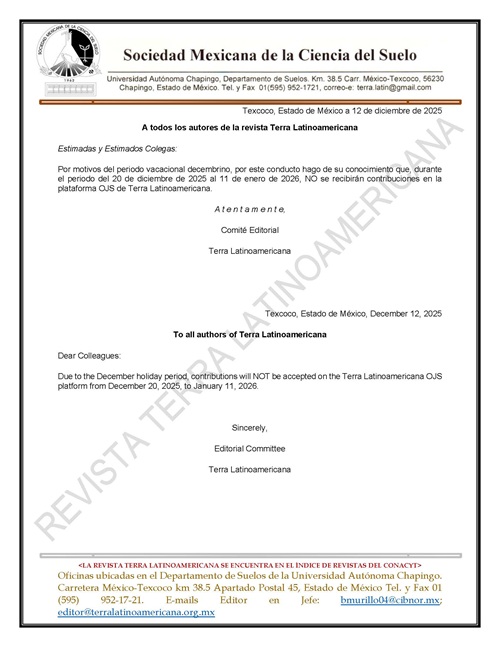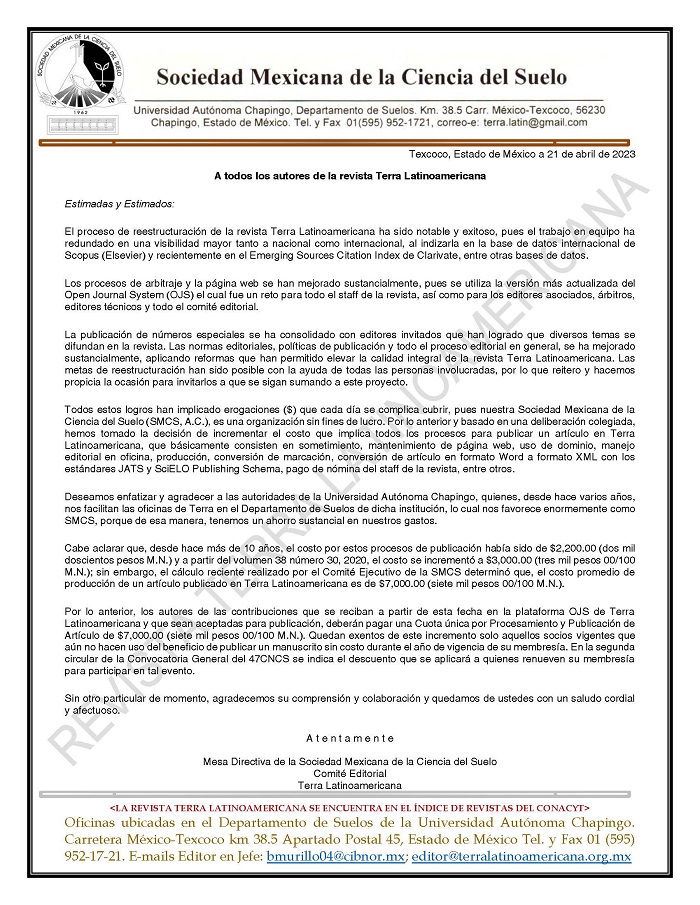Potential of Chlorophytum comosum for the Remediation of Soils Contaminated with Glyphosate
DOI:
https://doi.org/10.28940/terralatinoamericana.v43i.2010Keywords:
AMPA, phytoremediation, herbicide, spider plantAbstract
Glyphosate is a widely used herbicide, but its excessive use has raised concerns about its potential adverse ef fects on human health and the environment due to its persistence in the soil. Phytoremediation, which utilizes the ability of plants to absorb, accumulate, and metabolize contaminants, is presented as a viable and cost-ef fective alternative to remediate glyphosate-contaminated soils. Therefore,
the main objective of this research was to evaluate the phytoremediation capacity
of Chlorophytum comosum (spider plant) in agricultural soils contaminated with glyphosate. A greenhouse experiment was conducted by intentionally contaminating an agricultural soil with glyphosate at a concentration of 1.2 ml kg-1 of the active ingredient glyphosate. Three treatments were established: soil contaminated without plant (TSx), soil not contaminated + plant (TM), and soil contaminated + plant (TMx). Plant biometric variables and concentrations of glyphosate and aminomethylphosphonic acid (AMPA), were measured in soil and plant tissues at dif ferent times. The C. comosum plants in glyphosate-contaminated soil (TMx) showed greater growth in height and number of leaves, as well as greater biomass compared to the plants in uncontaminated soil (TM). The TMx treatment showed a significant reduction in glyphosate and AMPA concentrations in the soil af ter 180 days, reaching 100% dissipation of glyphosate. AMPA was detected in the roots of TMx plants. C. comosum plants showed a remarkable ability to adapt to and tolerate soils contaminated with glyphosate and AMPA, utilizing glyphosate-derived compounds as nutrients source and contributing to their degradation in the soil. These results suggest that C. comosum represents a promising alternative for the phytoremediation of glyphosate contaminated soils.
Downloads
Publication Facts
Reviewer profiles N/A
Author statements
- Academic society
- Terra Latinoamericana
- Publisher
- Mexican Society of Soil Science, C.A.
